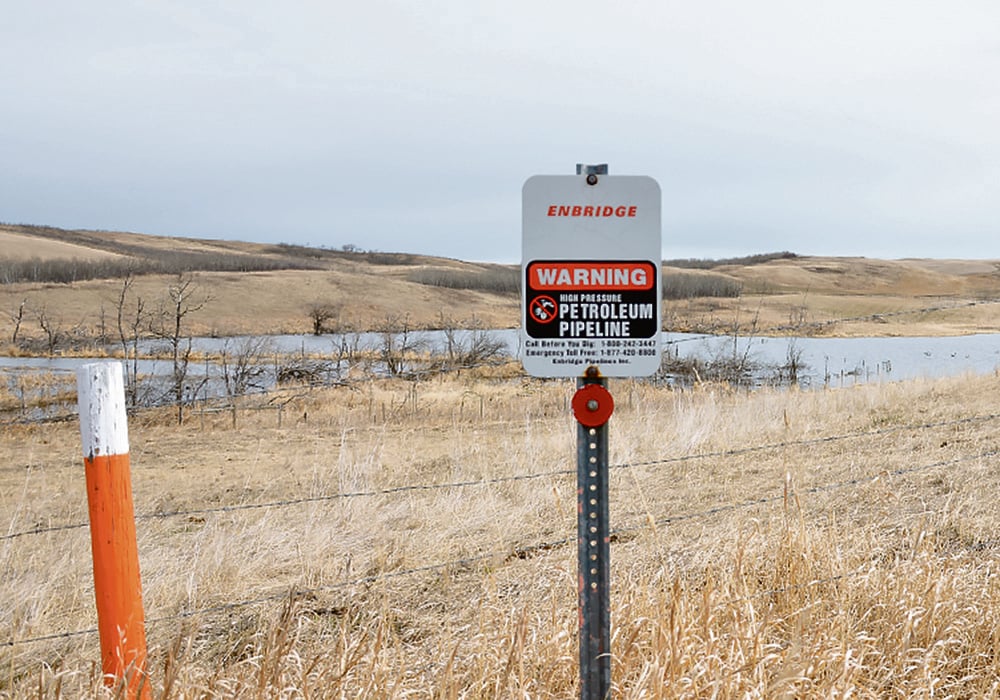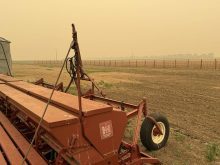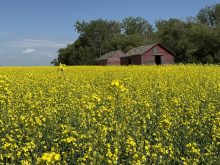British Columbia farmers with pipelines running under their land have complained that compensation runs out long before yields return to normal.
New findings from a University of Manitoba researcher suggest they may be right.
“Farmers believe … they are really being short-changed,” said Francis Zvomuya, a professor of soil science at the university.
During a lecture Jan. 31, Zvomuya pointed to his research efforts in the Peace River region of northeastern British Columbia.
B.C. produced an average of 5.38 billion cubic feet of natural gas per day in 2020, or about 35 per cent of Canada’s supply, federal stats show. Most of that came from the northeast.
Read Also

Feds propose overhaul of chronic wasting disease control program
Chronic Wasting disease control program getting updated by Canadian Food Inspection Agency with feedback encouraged from producers.
The Peace River region also produces a lot of crops, Zvomuya said. It’s part of B.C.’s agricultural land reserve.
Oil and gas installations are considered temporary land use. Once a pipeline has been laid through a field, the right-of-way must be reclaimed to its original state.
Farmers say that’s not happening, Zvomuya said. They’re compensated for up to three years of yield loss, but say they see yield losses of 20 percent or more on areas of the field where pipelines were installed. The yield impacts last longer than the period of payment.
According to provincial inspections, however, the land has been successfully rehabilitated.
“They don’t look at the yields,” Zvomuya said. “They look at plant height. They look at plant population, so plant counts … if they match 80 percent of the count and plant heights for the undisturbed sites, they say, ‘well, that’s successfully reclaimed.’”
Zvomuya and his colleagues studied three pipeline right-of-way sites over three years. These included four right-of-ways, ranging in age from four to 12 years since reclamation as of the start of the study. At each site, they measured crop yield and various soil health attributes.
The researchers found that, even after 12 years, relative grain yield was 35 percent lower than on untouched ground, although the land on older pipeline paths had somewhat recovered compared to the newest right-of-way.
Biomass yield increased as the sites got older, but relative biomass yield 12 years post-reclamation was still nearly 32 percent lower than on untouched ground.
Overall, grain yield was 42 to 65 percent lower on the pipeline area compared to undisturbed ground. Yield was lowest on the newest site.
Soil organic carbon was lower on the four- and nine-year-old sites, but by 12 years it had reasonably recovered. Other soil health indicators had also recovered after 12 years, with varying degrees of recovery on newer sites.
Zvomuya noted that the right-of-ways appeared to dry out faster than the rest of the field, likely because of heat from the pipeline. He showed photos of snow-covered fields that were bare over the pipe. The drying effect appeared to nullify any positive effects from the warmer temperature.
He said he and his team hope to study this phenomenon further. They begin a new stage of the study this spring.
















